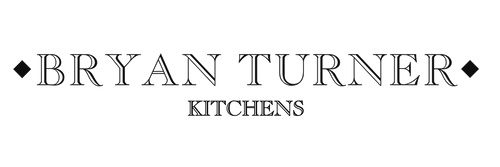Selecting between modern and classic kitchen cabinets is one of the most important choices you will have to make while organising a kitchen makeover. The foundation of your kitchen is made up of cabinets, which influence not only its appearance but also its use and ambiance. Your decision will affect how you use and feel about your kitchen on a daily basis, regardless of your preference for classic workmanship or modern minimalism.
We'll examine the distinctions between modern and traditional cabinets in this extensive guide, emphasising their design elements, advantages, disadvantages, and compatibility for various lifestyles. By the end, you'll know exactly which cabinet type would go best with your house and personal preferences.
What Defines Modern Kitchen Cabinets?
Clean Lines and Minimalist Design
Sleek lines, flat panels, and clean surfaces are characteristics of contemporary kitchen cabinets. They place a high value on clean surfaces and simplicity, with little ornation.
Materials and Finishes
Modern designs often feature:
-
High-gloss lacquer or matte finishes
-
Acrylic, laminate, or veneered wood
-
Neutral tones like white, grey, and black, often paired with bold accents
Hardware and Features
Disguised hardware or even handleless designs with push-open technology are common features of modern cabinets. The modern vibe is further enhanced by integrated lighting, concealed storage options, and soft-close hinges.
What Defines Traditional Kitchen Cabinets?
Classic Detailing and Craftsmanship
With raised or recessed panels, mouldings, and elaborate embellishments, traditional kitchen cabinets embrace decorative elements. They frequently draw attention to the inherent beauty of wood and honour craftsmanship.
Materials and Finishes
Traditional styles usually feature:
-
Solid oak, maple, or walnut
-
Hand-painted finishes in cream, sage, navy, or warm neutrals
-
Visible wood grain for added character
Hardware and Features
You’ll often find antique brass handles, ceramic knobs, or polished chrome pulls. Cabinet designs may include glass-front doors, plate racks, and decorative cornices.
Modern vs. Traditional Kitchen Cabinets: Key Differences
| Feature | Modern Cabinets | Traditional Cabinets |
|---|---|---|
| Design Style | Minimalist, sleek, handleless | Ornate, detailed, classic |
| Materials | Acrylic, laminate, engineered woods | Solid hardwood, painted timber |
| Colours | Neutral tones with bold contrasts | Warm, natural, heritage colours |
| Hardware | Minimal or hidden | Decorative handles, knobs, pulls |
| Overall Feel | Clean, contemporary, urban | Warm, homely, timeless |
Why Choose Modern Kitchen Cabinets?
-
Sleek Aesthetics – Perfect for open-plan living and contemporary homes.
-
Low Maintenance – Gloss or laminate finishes are easy to wipe clean.
-
Smart Storage – Handleless designs often incorporate clever storage solutions.
-
Versatility – Fits seamlessly with minimalist, industrial, or Scandi interiors.
Why Choose Traditional Kitchen Cabinets?
-
Timeless Appeal – Never goes out of style, especially in period properties.
-
Durability – Solid wood construction often lasts for decades.
-
Character – Adds warmth, depth, and charm to a kitchen space.
-
Customisable – Paint, stain, and detailing can be tailored to suit your taste.
Blending Modern and Traditional Styles
A growing trend in luxury kitchen design in the UK is to mix both styles. For example:
-
Pairing Shaker-style cabinets with modern quartz worktops
-
Combining matte black hardware with oak cabinetry
-
Introducing contemporary lighting into a traditional farmhouse kitchen
This approach creates a transitional kitchen that offers the best of both worlds.
Factors to Consider When Choosing Your Cabinet Style
1. Your Home’s Architecture
-
A Victorian terrace may feel more authentic with traditional cabinetry.
-
A new-build apartment might suit a sleek, modern design.
2. Your Lifestyle
-
Busy families may prefer modern cabinets for their low-maintenance finishes.
-
Those who love hosting may appreciate the warmth of traditional kitchens.
3. Budget
-
Modern flat-pack options can be more affordable.
-
Handcrafted traditional kitchens are often a long-term investment.
4. Longevity
Ask yourself whether you want a kitchen that reflects current trends or one that offers a classic look that ages gracefully.
Current UK Trends in Kitchen Cabinetry
-
Shaker cabinets remain hugely popular as a bridge between modern and traditional.
-
Matte black cabinetry is making a bold statement in contemporary kitchens.
-
Two-tone kitchens (e.g. navy base units with white wall cabinets) are on the rise.
-
Sustainable materials and eco-friendly finishes are increasingly in demand.
Caring for Your Kitchen Cabinets
-
Modern cabinets: Use a soft cloth and non-abrasive cleaner to avoid scratching glossy surfaces.
-
Traditional cabinets: Treat wood with appropriate oils or polishes to maintain its natural beauty.
Conclusion
When it comes to modern vs. traditional kitchen cabinets, there’s no single “best” choice — it all depends on your home, lifestyle, and personal style.
-
If you value sleek, minimalist aesthetics and easy upkeep, modern cabinetry may suit you best.
-
If you love warmth, craftsmanship, and timeless appeal, traditional cabinets could be the ideal option.
-
Or, you might prefer to blend both for a transitional style that feels both contemporary and classic.
You can design a kitchen that is not only practical but also reflects your taste and personality by carefully evaluating your needs and design preferences.
For more information about Bryan Turner Kitchen Furniture and accessories, give us a call at 01953 660762 and speak to a member of our expert team today or email us at enquiries@bryanturnerkitchens.com. We look forward to hearing from you.

